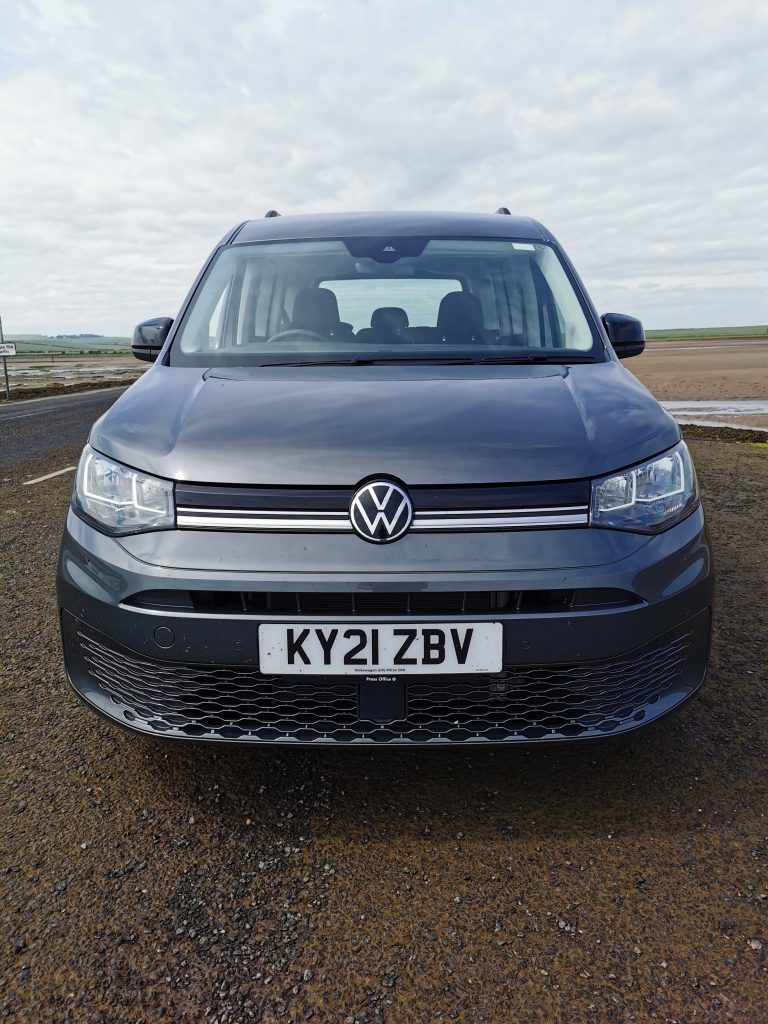Road Test and Review – Volkswagen Caddy Life 2021MY
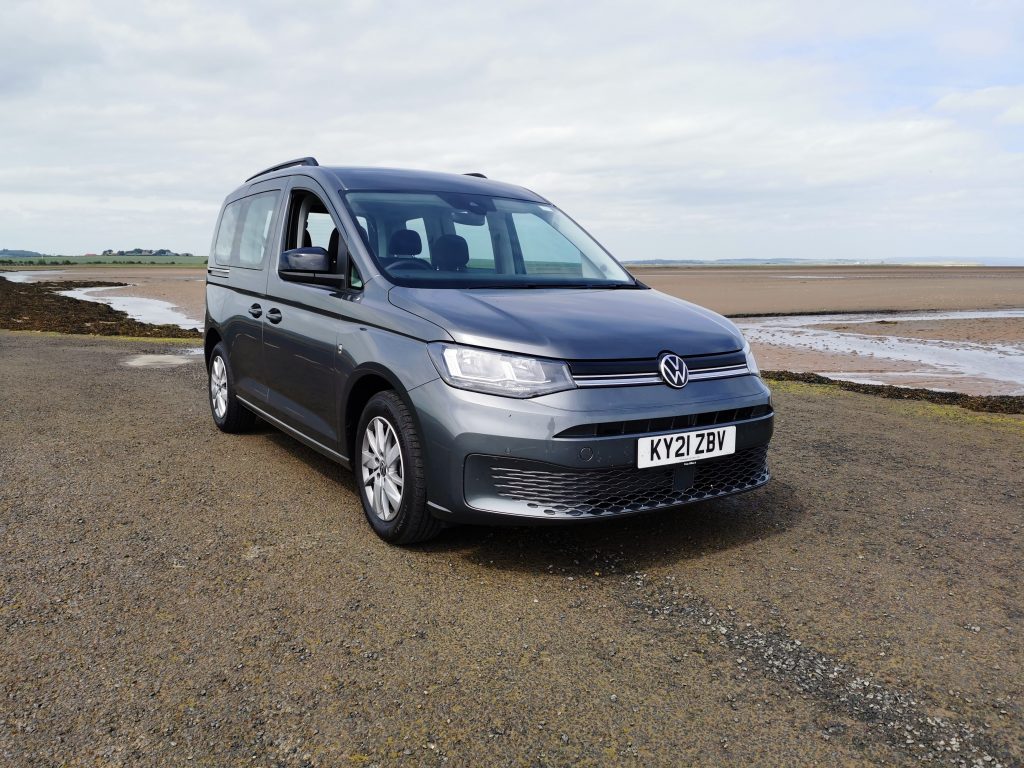
Background and Introduction
It’s as far back as 2015 since Volkswagen launched the fourth generation Caddy, and, whilst it was still looking quite fresh 6 years without a facelift is going some these days. Enter stage left, the 2021 ‘all new’ Caddy. Whilst still very recognisable as VW’s contender in the light van sector this is a major overhaul and almost certainly the last before a joint venture offering with new partner Ford. It is based on the MQB platform which was already in use across the passenger car range. New drivetrains and suspension underpin this as an ‘all new’ product.
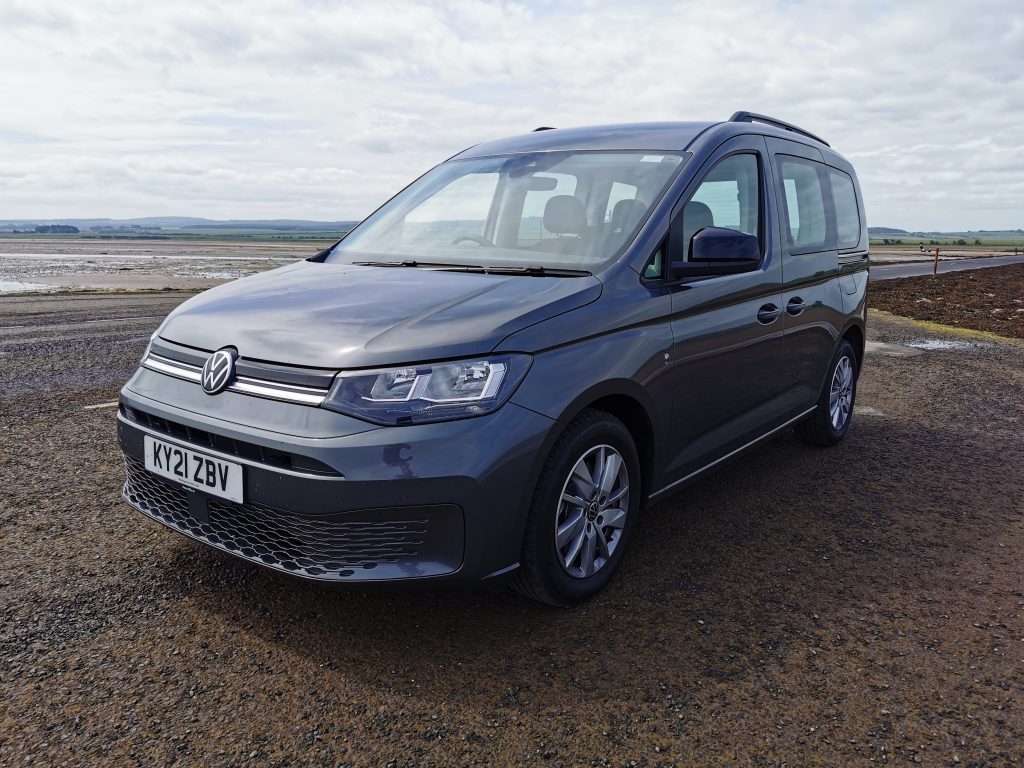
The van is now named Caddy Cargo, and is available in three trim levels, Commerce, Commerce Plus and Commerce Pro. This makes a clear distinction from the car version, called as previously the Caddy Life. There are two body styles as before, SWB and LWB (Maxi) although the longer van is a little shorter than its predecessor. The latest 2.0 litre Euro 6D diesel engines are fitted, in a choice of 75ps, 102ps and 122ps outputs –a 1.5 litre 114ps petrol option is once again offered (it had previously been withdrawn from the UK market) but at present there is no electric version available. Although we only conduct van reviews the offer of a press vehicle to review coincided with a brief break away so we opted for the Caddy Life in SWB guise. With the majority of the vehicle being identical to the Caddy Cargo we thought this was an acceptable trade off!
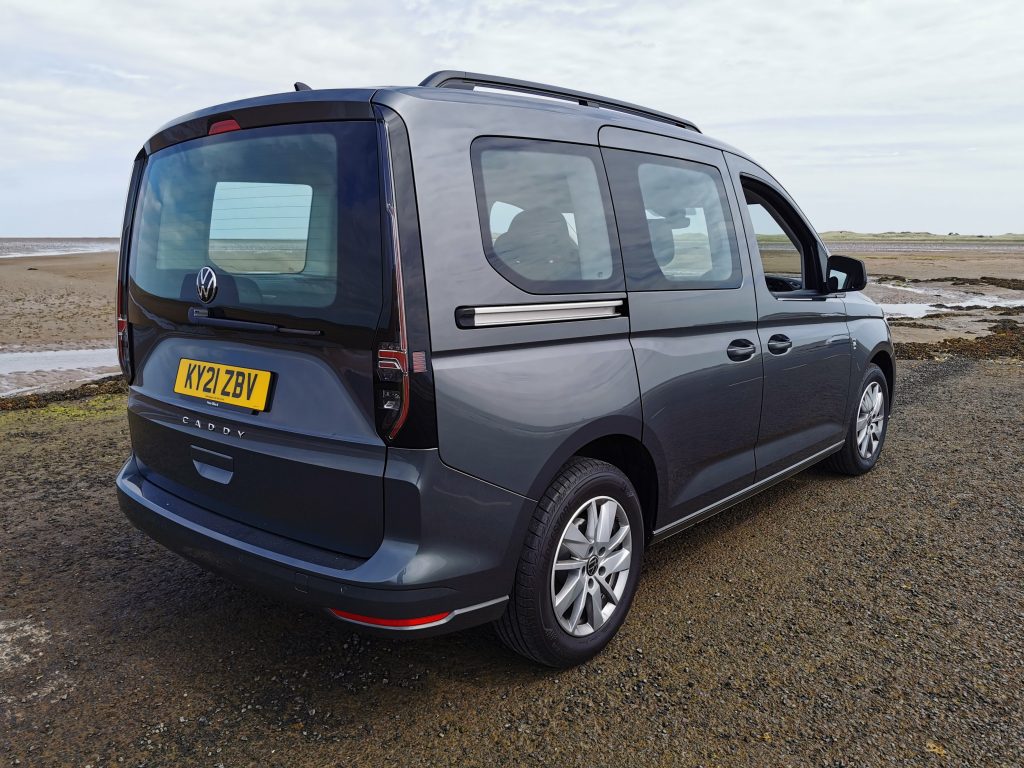
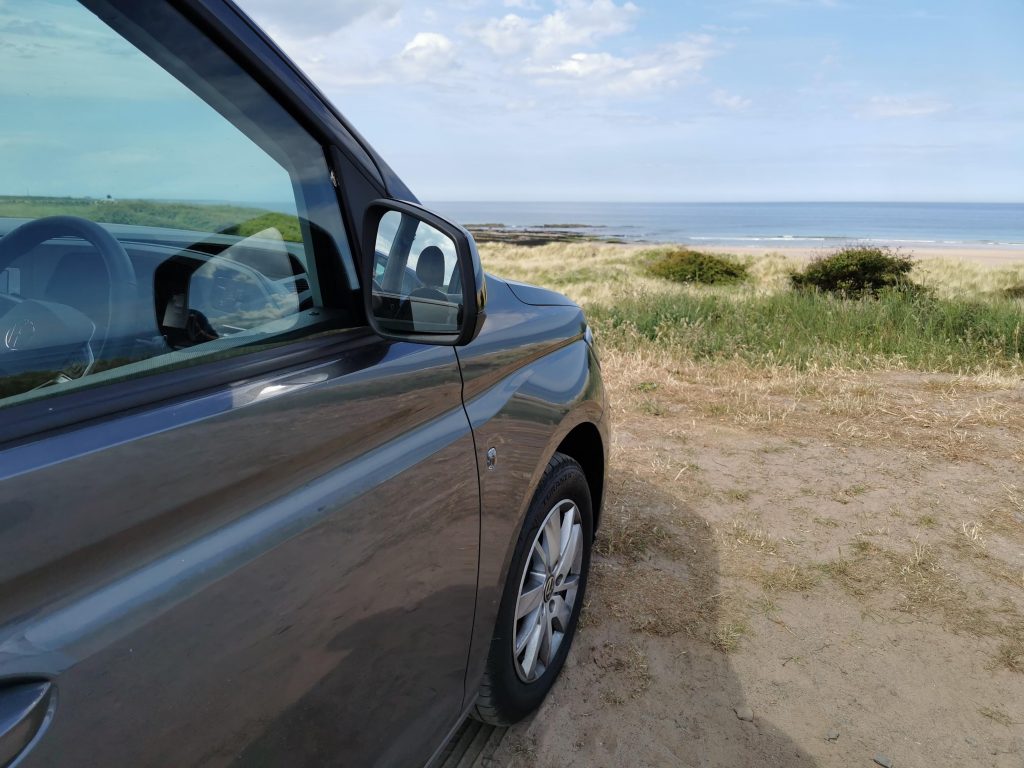
Our test vehicle was fitted with the 122ps diesel engine combined with the optional 7 speed DSG automatic gearbox. Standard equipment at this trim level includes an 8.25” colour touchscreen with Android Auto and Apple CarPlay, a plethora of safety systems such as Automatic Post-Collision braking, Driver Alert, eCall emergency system, Front Assist with Pedestrian Monitoring, City Emergency Braking System, and Electronic Brakeforce Distribution. Driver aid technology includes cruise control, lane assist, heated windscreen, air conditioning and front and rear parking sensors.
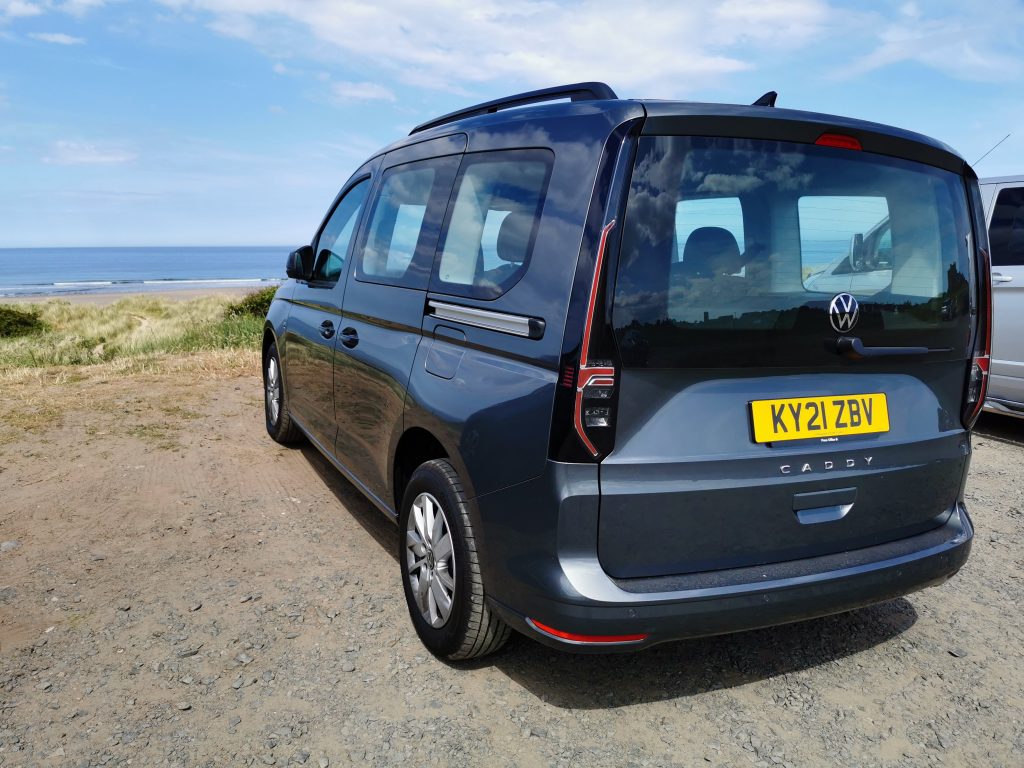
The Cab
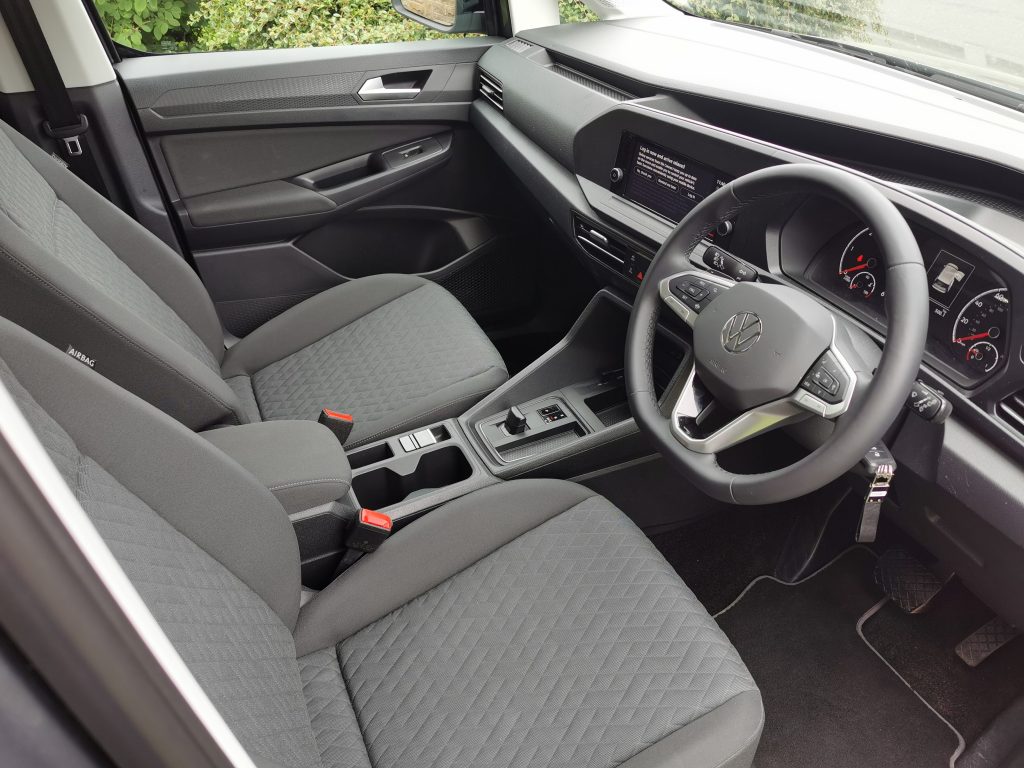
With an all new dash dominated by the multimedia screen which is nicely angled towards the driver, the cab interior has had a substantial makeover with a very striking angular theme. Seats are comfortable, but both driver and passenger complained of slight discomfort after one long, three hour drive without a break. In cab storage is reasonably generous with good sized door bins, a lidded centre console, dash top trays and a neat overhead shelf.
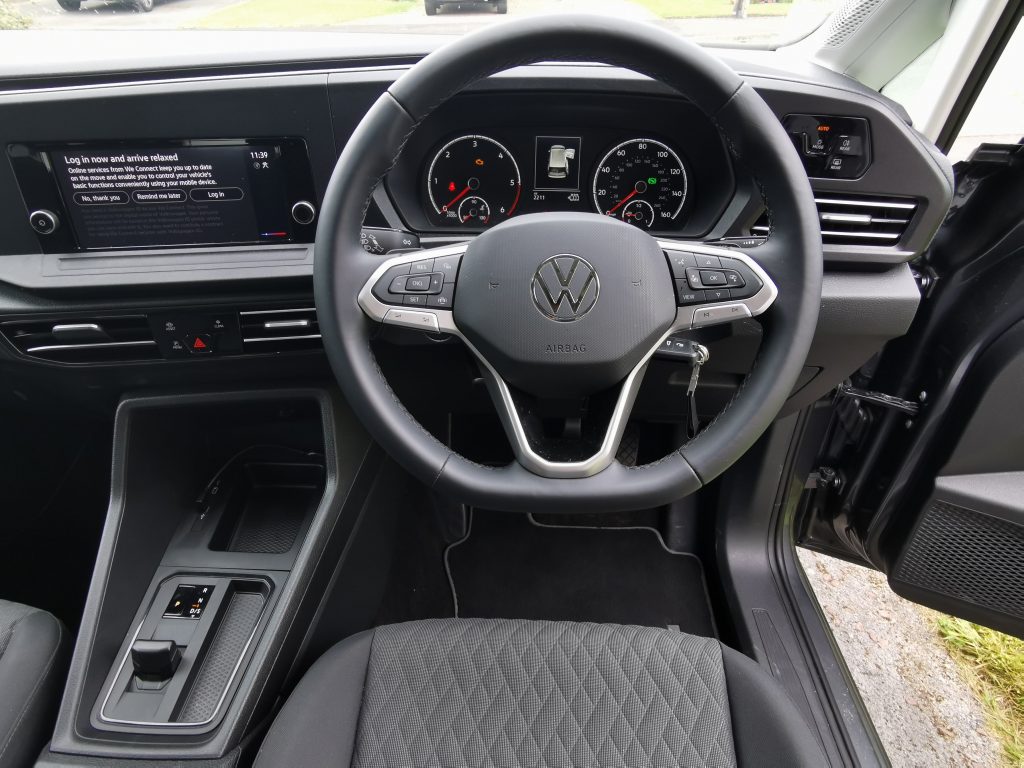
Once behind the wheel, it’s impossible not to notice the lack of physical switches and knobs with many operations being managed via the touchscreen. This takes a little getting used to, in particular adjusting the temperature level from the heating and air conditioning which involves entering the climate mode, then moving a small ‘slider’ on the screen to change the ambient air temperature, not particularly easy when driving. In addition, we found the touchscreen a little ‘laggy’ and it could take two or three touches on occasion to operate a function. There’s no doubt though that the ‘no knob’ policy makes the dash look clean, uncluttered and sophisticated, and the screen itself is very clear with no unwanted glare or reflections.
Loadspace
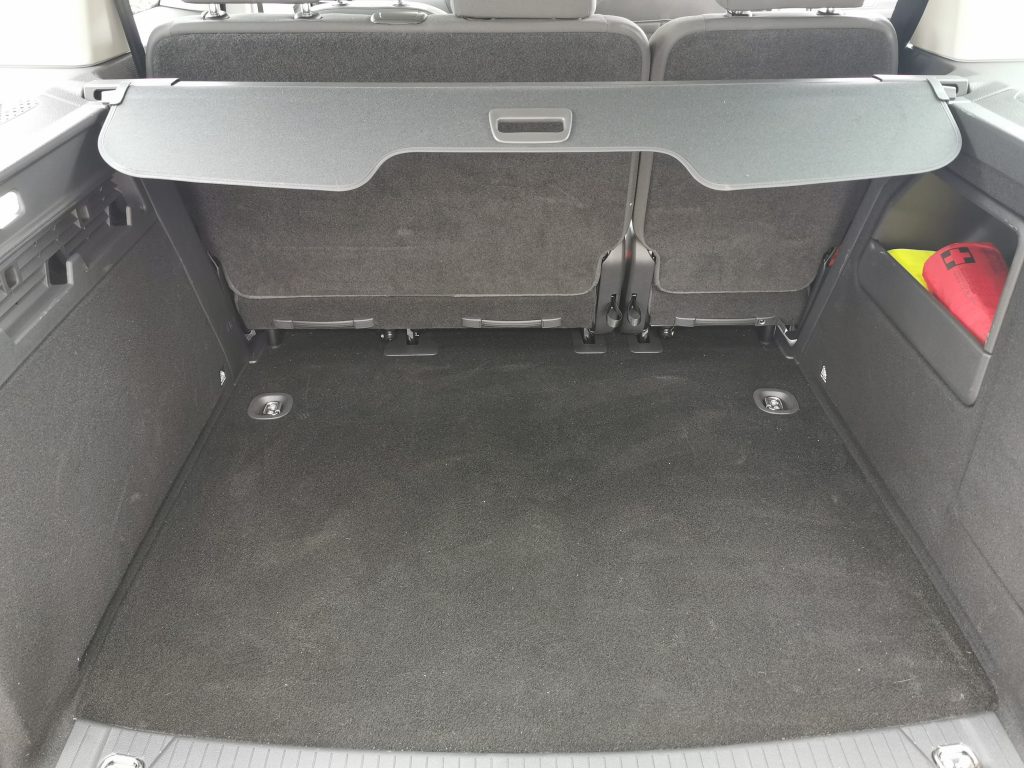
As the vehicle we reviewed was essentially a passenger car, we can only comment on this aspect as we found it – despite this being the SWB version and having the second row of seats, there is a good sized loadspace remaining which should be more than adequate for a family with prams, luggage and other items necessary for a holiday or a day trip. Our vehicle was fitted with a tailgate (twin doors are standard on the van) and the low loading height was immediately evident upon opening, a boon for those lifting heavy loads in and out of the van. A single side loading door is standard on SWB Caddy Cargo, twin side doors on the LWB Maxi version. Van payloads are between 647kg and 700kg, not class leading but more than adequate for the majority of light van operators, and load lengths of 1797mm (Maxi 2150mm) give a loadspace volume of 3.1cu/m (3.7 cu/m).
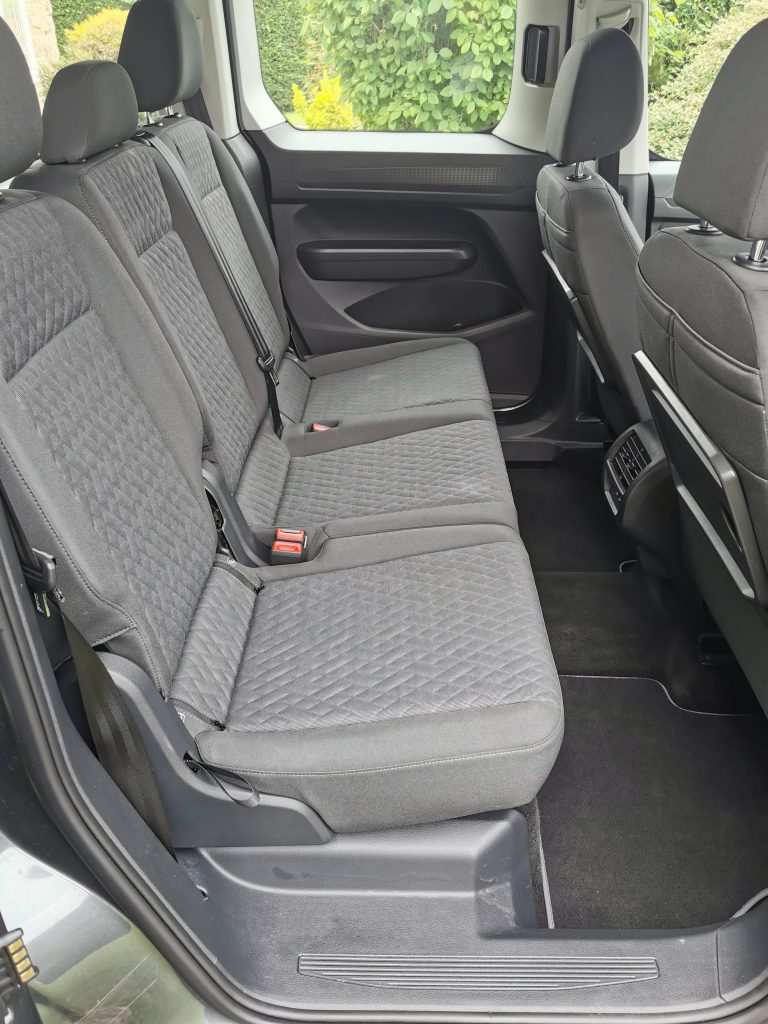
On the road
The Caddy, fitted with the higher powered engine is no slouch at all and, combined with the DSG gearbox was an absolute pleasure to drive. The new suspension coped with all surfaces well and noise intrusion into the cab area was minimal with just a little wind and tyre noise on occasion. It doesn’t feel like a van whatsoever, the driving experience combined with the cab environment is far closer to that of a nice SUV.
Just one dislike – although we could have switched it off we found the lane keeping alert irritating at best. If returning to a lane after overtaking without indicating (a normal manoeuvre), the system alerts you to what it thinks is an unintentional drift and puts physical pressure to the steering wheel ‘encouraging’ you to return to the lane on the right. It’s quite sudden and a little disconcerting.
Although no accurate fuel consumption measurements were taken, the trip computer invariably suggested that on most journeys the Caddy returned over 50mpg.
Conclusion
We really like the Caddy – it moves the sector into new territory from a technology and comfort level and other contenders are now looking quite dated in comparison. There are one or two niggles but these wouldn’t put us off buying one – the many pros are nowhere near outweighed by the few cons. For the small business user it should be at or close to the top of the shopping list and for fleets the high residual values the Caddy continues to command mean that whole life costs will be low whilst keeping drivers happy in a quality, well equipped, capable and comfortable van.
